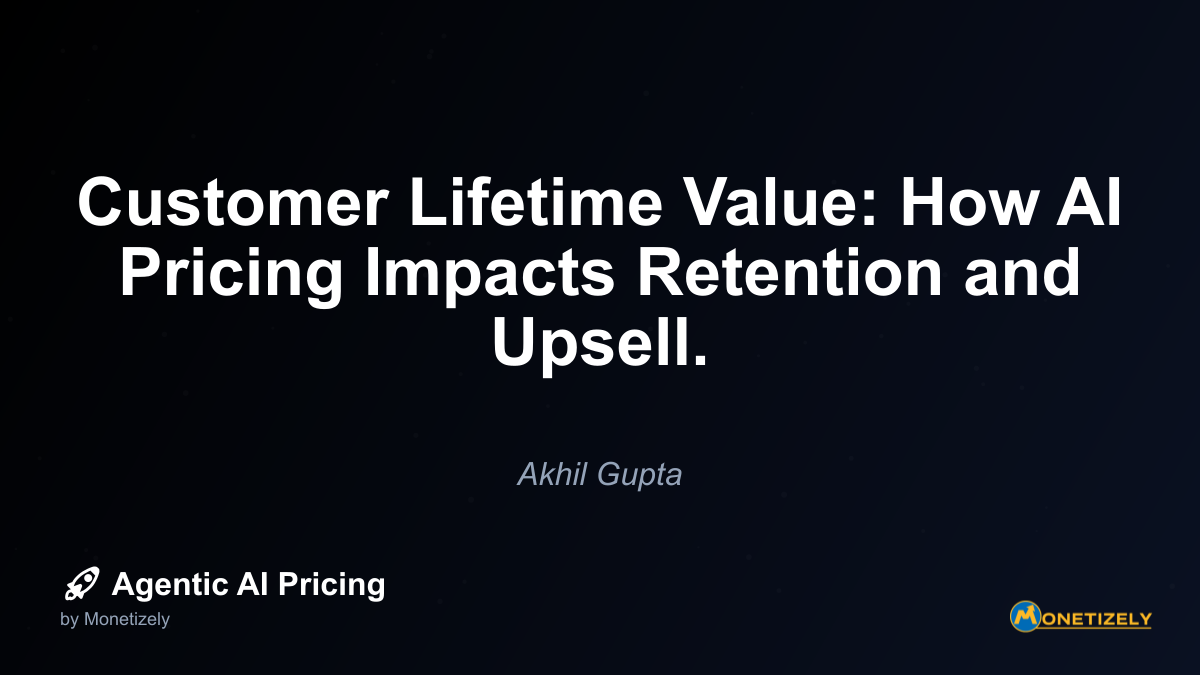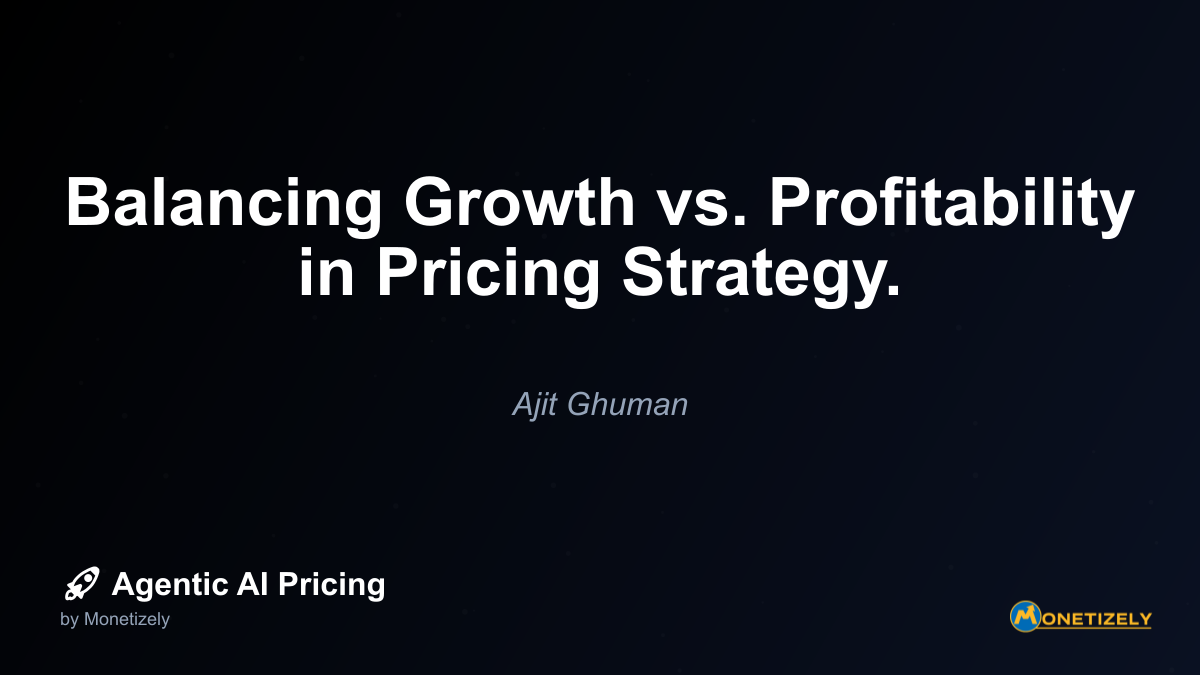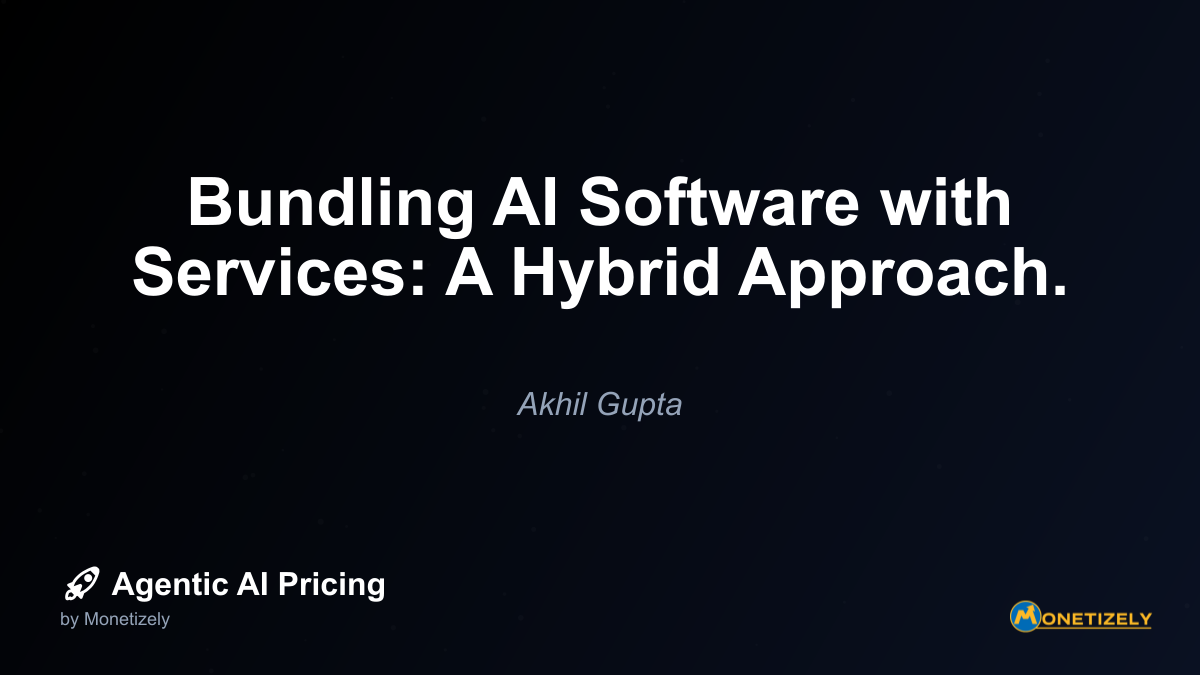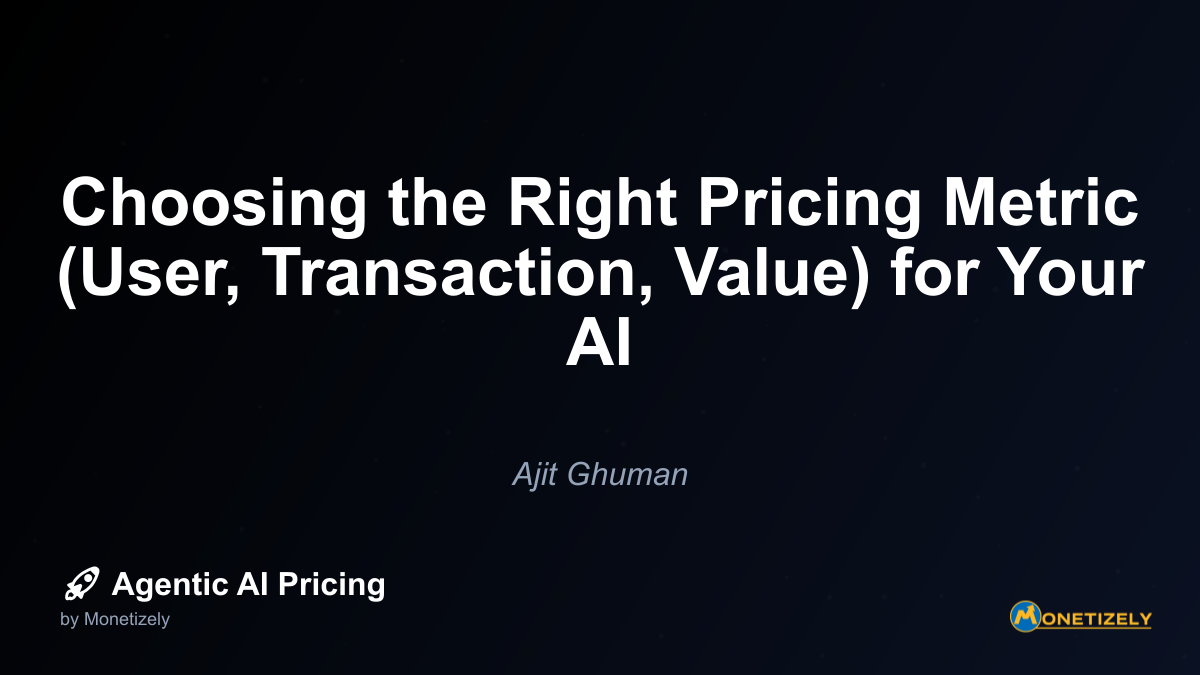· Akhil Gupta · Strategy & Planning · 6 min read
Customer Lifetime Value: How AI Pricing Impacts Retention and Upsell.
AI and SaaS Pricing Masterclass
Learn the art of strategic pricing directly from industry experts. Our comprehensive course provides frameworks and methodologies for optimizing your pricing strategy in the evolving AI landscape. Earn a professional certification that can be imported directly to your LinkedIn profile.

Balancing Short-Term Revenue with Long-Term Value
The tension between immediate revenue maximization and long-term customer value represents a critical strategic consideration for AI solution providers:
The Long-Term Value Premium
Organizations that prioritize customer lifetime value over short-term revenue often see significant benefits:
- Lower customer acquisition costs as referrals increase
- Reduced marketing expenses through higher retention
- More predictable revenue forecasting through stable customer relationships
- Higher valuation multiples reflecting quality of revenue
- Competitive insulation through deeper customer relationships
These advantages create sustainable growth that outperforms short-term revenue maximization strategies over time.
Investor Education
For venture-backed AI companies, educating investors about CLV-focused pricing requires:
- Demonstrating the mathematics of retention economics
- Highlighting the compounding effect of expansion revenue
- Providing cohort analyses showing long-term revenue trends
- Comparing CAC recovery periods under different pricing models
- Illustrating the valuation impact of retention-focused metrics
This education helps align investor expectations with pricing strategies that prioritize sustainable growth over immediate revenue.
Organizational Alignment
Creating internal alignment around CLV-focused pricing requires:
- Compensation structures that reward retention and expansion
- Success metrics that prioritize customer outcomes
- Cross-functional collaboration between product, sales, and customer success
- Executive leadership that values sustainable growth
- Regular communication of CLV impact on company valuation
This alignment ensures that all departments work together to implement pricing strategies that maximize customer lifetime value.
Case Study: How AI-Driven Customer Service Platform Transformed Its Pricing for Higher CLV
A leading AI customer service platform provides an instructive example of CLV-focused pricing transformation:
Initial Approach: User-Based Pricing
The company initially offered a traditional per-agent pricing model:
- $99 per human agent per month
- Unlimited AI-assisted interactions
- Tiered pricing based on company size
While this model was easy to understand, it created several problems:
- Customers were reluctant to add new agents due to cost concerns
- The value of AI automation (reducing human agent needs) was misaligned with pricing
- Seasonal businesses faced difficult decisions during peak periods
- The model didn’t capture the varying complexity of customer service operations
These issues resulted in high initial conversion but poor expansion and retention metrics.
CLV-Focused Transformation
The company redesigned its pricing structure around customer lifetime value:
- Base platform fee covering core AI capabilities
- Volume-based pricing for automated resolutions (with decreasing costs at scale)
- Premium for complex issue handling requiring human intervention
- Success-based components tied to customer satisfaction improvements
This new model aligned pricing with customer outcomes in several ways:
- Customers paid less as AI automation improved (encouraging adoption)
- Pricing scaled smoothly with business needs rather than arbitrary user counts
- Seasonal fluctuations were accommodated through consumption-based components
- Value metrics directly connected to business outcomes
Results
The pricing transformation delivered significant improvements in key CLV metrics:
- Retention rate: Increased from 76% to 92% annual retention
- Expansion revenue: Grew from 105% to 135% net dollar retention
- Customer satisfaction: Improved as clients optimized for automation
- Sales cycle: Shortened by 22% due to clearer value proposition
- Customer lifetime: Extended from average 2.3 years to 4.1 years
- Lifetime value: Increased by 87% despite lower initial contract values
This case demonstrates how aligning pricing with customer value creation can dramatically improve CLV metrics even when sacrificing short-term revenue maximization.
Practical Implementation: Building a CLV-Focused AI Pricing Strategy
Organizations looking to implement CLV-focused pricing for AI solutions should follow a structured approach:
Step 1: Value Mapping
Begin by mapping the specific value your AI solution delivers:
- Identify primary and secondary business outcomes
- Quantify the financial impact of these outcomes
- Understand how value realization evolves over time
- Determine how value varies across customer segments
- Identify metrics that accurately reflect value delivery
This foundation ensures pricing aligns with the actual value customers receive rather than arbitrary metrics.
Step 2: Customer Journey Analysis
Analyze the typical customer journey to identify critical moments:
- Initial adoption challenges and barriers
- Time to first value achievement
- Expansion trigger points
- Renewal decision factors
- Potential churn risks
This analysis helps design pricing structures that support customers through each stage of their journey.
Step 3: Pricing Structure Design
Create pricing structures that align with value delivery and customer journey:
- Select appropriate base models (subscription, consumption, outcome-based)
- Design tier structures that create natural progression paths
- Develop expansion mechanisms that scale with value
- Build in flexibility for different usage patterns
- Create predictability mechanisms to reduce anxiety
The ideal structure creates a win-win relationship where pricing scales proportionally with value received.
Step 4: Testing and Refinement
Implement a systematic approach to pricing optimization:
- Design controlled experiments for new pricing approaches
- Collect qualitative feedback on pricing perception
- Analyze cohort performance across different pricing structures
- Measure impact on key CLV metrics
- Refine based on data-driven insights
This continuous improvement process ensures pricing evolves with changing market conditions and customer needs.
The Future of AI Pricing and CLV: Emerging Trends
Several emerging trends are reshaping the relationship between AI pricing and customer lifetime value:
Dynamic Value-Based Pricing
Advanced AI solutions are beginning to implement dynamic pricing based on actual value delivered:
- Real-time adjustment based on measured outcomes
- Personalized pricing reflecting individual usage patterns
- Automatic tier adjustments based on utilization patterns
- Risk-sharing models for uncertain value delivery
These approaches create unprecedented alignment between pricing and value, potentially transforming traditional subscription models.
Ecosystem Pricing
As AI solutions become more interconnected, ecosystem pricing models are emerging:
- Cross-platform bundles offering integrated capabilities
- Value sharing between complementary solutions
- Unified pricing across multiple AI capabilities
- Marketplace models with dynamic pricing based on demand
These approaches recognize that value often derives from the integration of multiple AI capabilities rather than isolated solutions.
Predictive CLV Optimization
AI providers are increasingly using their own technology to optimize pricing for lifetime value:
- Predictive analytics identifying optimal pricing for specific customer profiles
- Personalized offers based on predicted usage patterns
- Churn prediction with proactive intervention strategies
- Automated expansion recommendations based on usage patterns
This application of AI to pricing strategy itself creates opportunities for unprecedented optimization of customer lifetime value.
Conclusion: The Strategic Imperative of CLV-Focused AI Pricing
In the rapidly evolving agentic AI landscape, pricing strategies that prioritize customer lifetime value represent a critical competitive advantage. Organizations that align their pricing with customer success create sustainable growth through improved retention, natural expansion, and deeper customer relationships.
Effective CLV-focused pricing requires:
- Deep understanding of how customers derive value from AI solutions
- Pricing structures that align costs with value realization
- Transparent communication that builds trust and reduces anxiety
- Upsell pathways that follow natural customer evolution
- Continuous measurement and optimization of CLV metrics
For AI solution providers, the shift from traditional SaaS pricing approaches to CLV-focused strategies isn’t just a tactical consideration—it’s a strategic imperative that determines long-term market position and sustainable growth.
By designing pricing that supports customers throughout their AI adoption journey, organizations create the foundation for lasting relationships that drive predictable revenue, reduce acquisition costs, and build defensible market positions in the competitive AI landscape.
As you evaluate your own AI pricing strategy, consider how your current approach impacts customer lifetime value. Are you maximizing short-term revenue at the expense of long-term relationships? Or are you building pricing structures that grow as your customers succeed? The answer to this question may determine your competitive position in the AI economy of tomorrow.
To learn more about implementing effective AI pricing strategies that maximize customer lifetime value, explore our comprehensive guide to churn analysis for AI subscriptions and our complete guide to SaaS pricing metrics and KPIs.
Co-Founder & COO
Akhil is an Engineering leader with over 16+ years of experience in building, managing and scaling web-scale, high throughput enterprise applications and teams. He has worked with and led technology teams at FabAlley, BuildSupply and Healthians. He is a graduate from Delhi College of Engineering and UC Berkeley certified CTO.
Pricing Strategy Audit
Let our experts analyze your current pricing strategy and identify opportunities for improvement. Our data-driven assessment will help you unlock untapped revenue potential and optimize your AI pricing approach.




